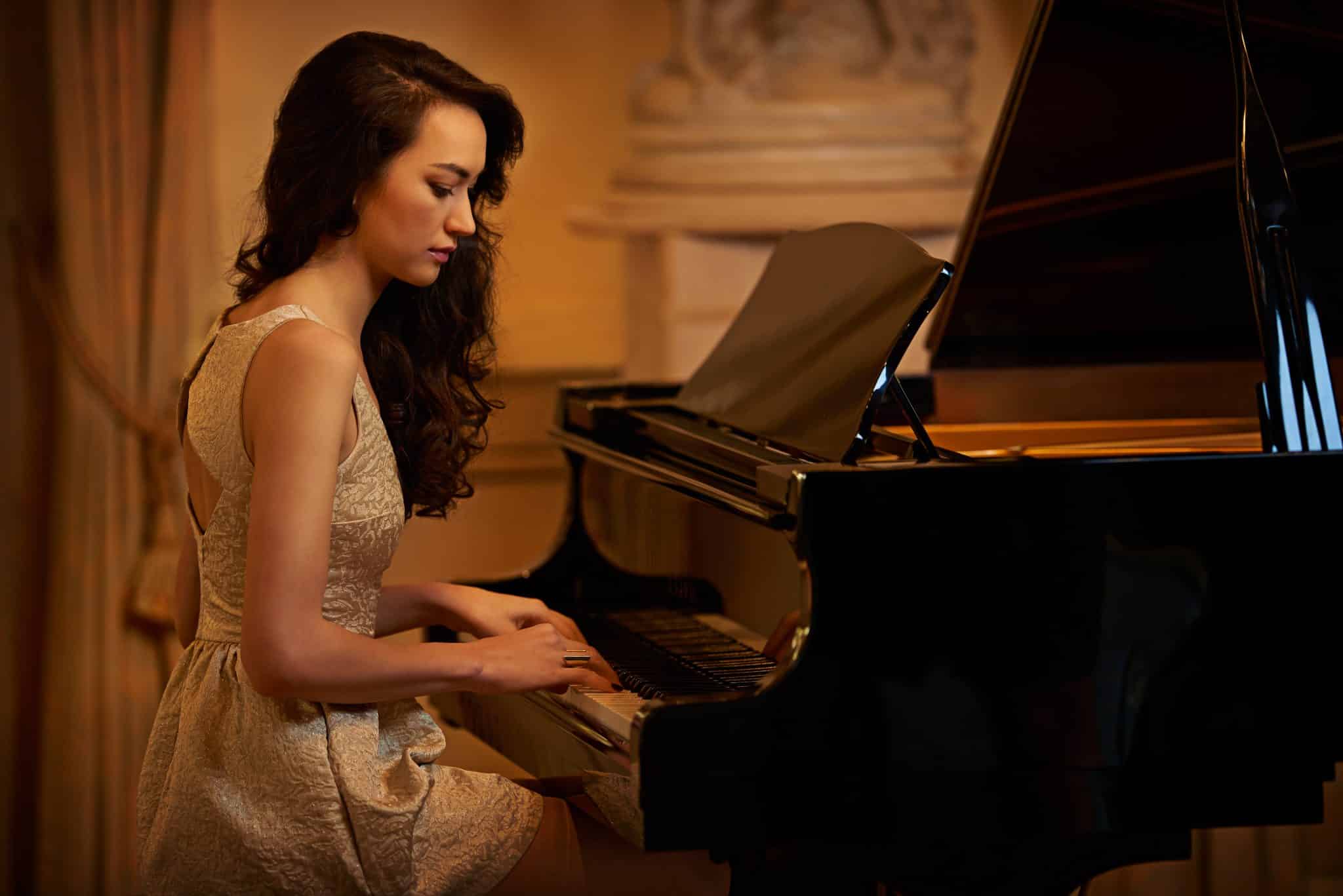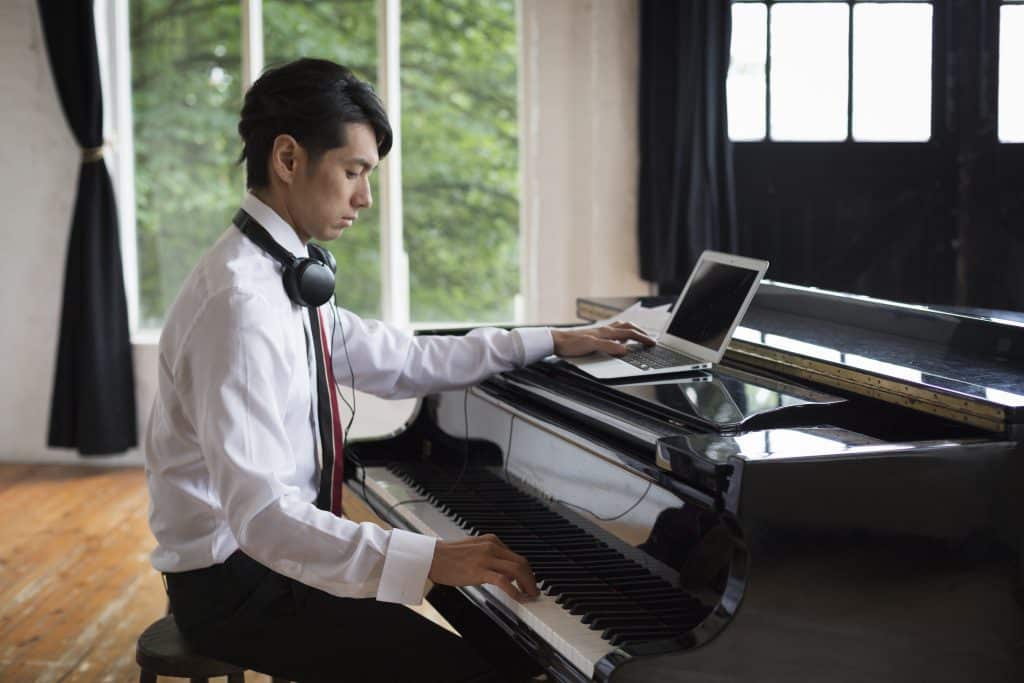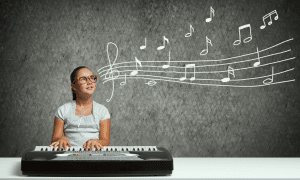If you’ve ever dreamed of playing the piano, one of the first questions you might ask is, “How much do piano lessons cost?”
Hiring a piano instructor can be a great way to learn, but it’s important to know the financial and time commitments involved.
In this blog, we’ll explore the costs of traditional piano lessons, the types of commitments you’ll need to make, and how learning piano online with methods like Harry Rios’ “My Piano by Ear” course can offer a more flexible, affordable, and enjoyable alternative.
The Cost of Traditional Piano Lessons
The price of traditional piano lessons can vary greatly depending on several factors, such as the teacher’s experience, location, and the length of each session.
Here’s a general breakdown:
- Average Cost per Lesson:
The average cost for a 30-minute piano lesson ranges from $30 to $60. For hour-long lessons, the price can go up to $60 to $100 per session. - Weekly Lessons Add Up:
Most students take one lesson per week. This means you could be spending anywhere from $120 to $400 per month on piano lessons. Over the course of a year, that adds up to $1,440 to $4,800—and that’s for lessons alone, without considering additional costs like books or materials. - Premium Instructors:
If you want to work with an experienced professional, especially one with a high-level performance background or specialization in a particular genre, you could be looking at prices of $100 or more per lesson. - Hidden Costs:
In addition to paying for lessons, students often need to buy books, sheet music, or specialized tools. Depending on your instructor’s methods, these materials can add up to $50 to $200 per year.
Time Commitments: The Structure of Traditional Lessons
Along with the financial cost, there’s also a significant time commitment with traditional piano lessons.
Most in-person piano lessons follow a rigid schedule with little flexibility, meaning you’ll have to block out a specific time each week to meet with your instructor.
In addition to the lesson time, regular home practice is essential if you want to make progress.
- Learning Sheet Music:
Many traditional piano instructors focus heavily on reading sheet music and following structured, formal curricula. While this approach can be beneficial, it can also feel slow or uninspiring for students who simply want to play their favorite songs. Reading sheet music can sometimes feel like learning a new language—an aspect that can turn off students who would rather start playing by ear and having fun from the beginning. - Slow Progression:
Traditional lessons often involve a step-by-step progression through classical or formal piano methods. While valuable for developing foundational skills, this can sometimes make the learning process feel slower and less intuitive. If you’re eager to play the songs you love, you may find this method more restrictive than rewarding. - Potential Boredom:
For many students, especially beginners, the repetition of exercises and scales can become monotonous. This is especially true for younger learners or adults who want to pick up piano as a fun hobby. When the excitement of learning is replaced by rigid practice sessions, motivation can dwindle.

Alternatives to Traditional Lessons: Learning Piano Online
Fortunately, there are alternative ways to learn piano that offer more flexibility and affordability, especially for those who want a less rigid and more intuitive experience.
One of the best options is online piano courses, and Harry Rios’ “My Piano by Ear” method is an excellent choice for beginners and intermediate players alike.
Here’s how online piano courses like Harry’s compare to traditional lessons:
1. Cost-Effective Learning
Unlike the high costs associated with traditional piano lessons, Harry Rios’ course is free to get started. That’s right. You read that correctly. FREE.
The introductory course teaches you the basics of playing piano by ear without the need for expensive, ongoing lessons. You can continue your learning with affordable paid courses if you wish, but the initial sign-up is completely free, making it an ideal option for those on a budget.
- Traditional Lessons: $30–$100 per lesson, potentially adding up to thousands of dollars a year.
- Harry Rios’ Course: Free introductory course with affordable options for continued learning.
2. Flexibility and Convenience
One of the biggest benefits of online learning is the flexibility it offers.
With traditional lessons, you’re bound to a set schedule each week. But with online courses like Harry’s, you can learn at your own pace. Whether you want to practice for 10 minutes a day or dedicate a few hours on the weekends, the choice is yours.
- Traditional Lessons: Fixed schedule, often with cancellation fees or rescheduling complications.
- My Piano By Ear: Learn anytime, anywhere, with no strict deadlines or schedules.
3. Learning by Ear: A More Intuitive Approach
Harry’s “My Piano by Ear” method is designed to make learning piano more intuitive and fun.
Instead of focusing on reading sheet music, the course emphasizes ear training, pattern recognition, and playing the songs you love right from the start.
This method helps you develop a natural connection to music and allows you to skip the often tedious process of learning to read sheet music.
- Traditional Lessons: Focus on sheet music and classical training, which may feel slow or unengaging.
- My Piano By Ear: Learn to play songs by ear, making the process more engaging and tailored to your musical tastes.
4. Play the Songs You Love
One of the most appealing aspects of Harry’s course is that you can learn to play the music you love, from pop hits to classic songs.
The course is structured to help you develop the skills needed to play by ear, meaning you can quickly pick up songs that inspire you.
Whether you’ve always wanted to play “Let It Be” by The Beatles or “Someone Like You” by Adele, Harry’s method makes it possible without needing to rely on sheet music.
- Traditional Lessons: Often focus on classical music and structured pieces that may not align with your musical interests.
- My Piano By Ear: Play the music you’re passionate about, from day one.
5. No Long-Term Commitment
With traditional lessons, students often feel locked into long-term commitments, either due to financial investments or teacher expectations.
Online courses, on the other hand, offer the freedom to learn at your own pace without pressure. Whether you want to dip your toes into learning piano or dive in fully, you’re in control of your journey.
- Traditional Lessons: Often require long-term commitment and ongoing fees.
- My Piano By Ear: Start for free and continue at your own pace, with no pressure.
Make Piano Learning Fun, Affordable, and Flexible
While traditional piano lessons have their merits, they can be expensive, time-consuming, and, for some, too rigid in structure.
If you’re looking for a more intuitive, fun, and affordable way to learn, consider signing up for Harry Rios’ free “Piano by Ear” course. You’ll gain the skills to play your favorite songs without the need for sheet music, all while learning at your own pace.
With Harry’s method, you can enjoy the process of learning, play the songs you love, and unlock your musical potential—all without the financial burden or rigid structure of traditional lessons.
Sign up for free today and start your piano journey on your own terms!




